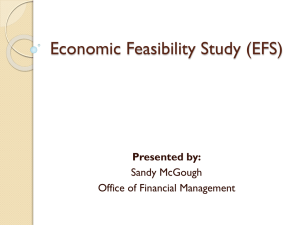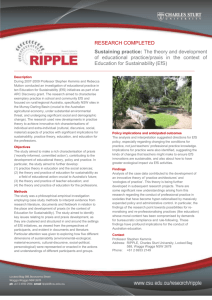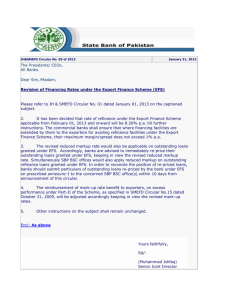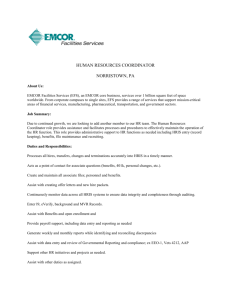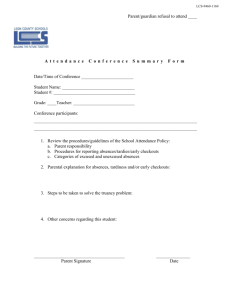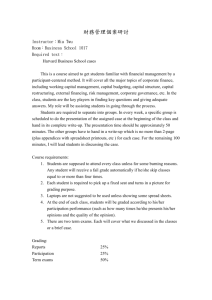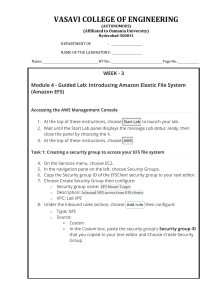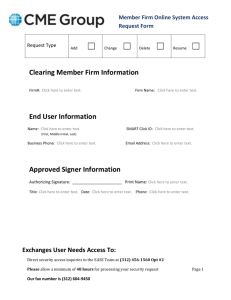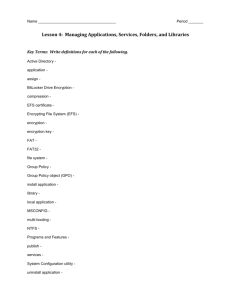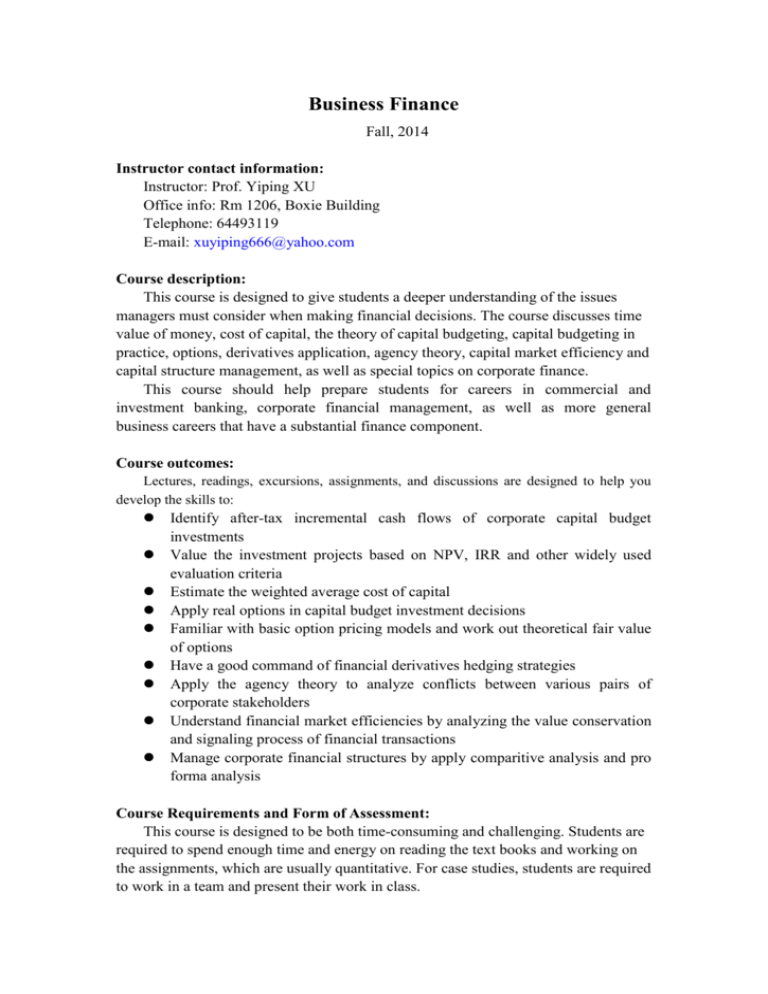
Business Finance
Fall, 2014
Instructor contact information:
Instructor: Prof. Yiping XU
Office info: Rm 1206, Boxie Building
Telephone: 64493119
E-mail: xuyiping666@yahoo.com
Course description:
This course is designed to give students a deeper understanding of the issues
managers must consider when making financial decisions. The course discusses time
value of money, cost of capital, the theory of capital budgeting, capital budgeting in
practice, options, derivatives application, agency theory, capital market efficiency and
capital structure management, as well as special topics on corporate finance.
This course should help prepare students for careers in commercial and
investment banking, corporate financial management, as well as more general
business careers that have a substantial finance component.
Course outcomes:
Lectures, readings, excursions, assignments, and discussions are designed to help you
develop the skills to:
Identify after-tax incremental cash flows of corporate capital budget
investments
Value the investment projects based on NPV, IRR and other widely used
evaluation criteria
Estimate the weighted average cost of capital
Apply real options in capital budget investment decisions
Familiar with basic option pricing models and work out theoretical fair value
of options
Have a good command of financial derivatives hedging strategies
Apply the agency theory to analyze conflicts between various pairs of
corporate stakeholders
Understand financial market efficiencies by analyzing the value conservation
and signaling process of financial transactions
Manage corporate financial structures by apply comparitive analysis and pro
forma analysis
Course Requirements and Form of Assessment:
This course is designed to be both time-consuming and challenging. Students are
required to spend enough time and energy on reading the text books and working on
the assignments, which are usually quantitative. For case studies, students are required
to work in a team and present their work in class.
During the lectures, I like to encourage student participation and thus will at
times actively call on students. My intention is not to test you, but rather to keep
everyone actively engaged in the learning process.
Assessment:
Class assessment:
10%
Problem sets:
20%
Mid-term examination: 20%
Final examination:
50%
Total:
100%
Attendance policy:
Due to the nature of a typical finance course, regular attendance is required. Unreported
absence will be counted in the final evaluation. An excused absence requires a written
medical excuse or written approval from the school’s administration office. All other absences
are considered to be unexcused. Unexcused absences will affect your grade (see below).
Penalties for unexcused absences:
1 absence – class participation grade drops one full letter grade (example: A- to B-)
2 absences – class participation grade drops two full letter grades
3 absences – class participation grade drops three full letter grades
4 or more absences – class participation grade is a failing grade
Academic Honesty
Please refer to the following web link for policies on academic honesty:
http://www.luc.edu/cas/pdfs/CAS_Academic_Integrity_Statement_December_07.pdf
Required textbooks:
Corporate Financial Management, Douglas R Emery, John D. Finnerty and John D. Stowe,
Third Edition, Pearson Prentice Hall. (EFS)
Other readings:
Fundamentals of Financial Management, Tenth Edition, James C. Van Horne,
John M. Wachowicz, Jr.(HW)
Fundamentals of Corporate finance, Third Edition, Brealey, Myers, and Marcus.
McGraw-Hill Irwin. (BMM)
Class Schedule
WK1: The Time Value of Money
(EFS: Ch.3, pp46-82. HW: Ch.3, pp35-64. )
1. Rates of return and Net Present Value
2. Valuing Single Cash Flows
3. Valuing Annuities
4.
5.
6.
7.
Multile Expected Future Cash Flows
Compounding Frequency
Partial Time Periods
Evaluating Special financing Offers
WK2: Cost of Capital
(EFS: Ch.7, pp160-187; HW: Ch.15. pp387-399. )
1. The Cost of Capital
2. Corporate Valuation
3. Value and the Risk-Return Trade-Off
4. Leverage
5. Leverage and Risk Bearing
6. The Weighted Average Cost of Capital
7. A Potential Missue of the Weighted Average Cost of Capital
8. Financial Risk
9. A Practical Prescription for Estimating a Cost of Capital
WK3: Business Investment Rules
(EFS: Ch. 8, pp188-215; HW: Ch.13, pp324-340 )
1. The Capital Budgeting Process
2. Net Present Value
3. Internal Rate of Return
4. Using NPV and IRR
5. Other Capital Budgeting Criteria
6. Business Investent in Practice
7. Assignment: Problem Set #1
WK4: Capital Budgeting Cash Flows
(EFS: Ch. 9, pp216-247; HW: Ch.7, pp164-202)
1. An Overview of Estimating Cash Flows
2. Calculating Incremental Cash Flows
3. An Example of Incremental Cash Flow Analysis
4. Inflation
5. A Little More Ablout Taxes
6. Evaluating Replacement Cycles
WK5: Capital Budgeting in Practice
(EFS: Ch. 10, pp249-274)
1. A Proposal for Capacity Expansion
2. Real Options
3. Capital Rationing
4. Managing the Firm’s Capital Budget
5. Other Factors That Are Difficult to Quantify
6. Some Practical Advice
7. Problem Set #1 due
WK6: Case Study: The Investment Detective
(Case material will be distributed in class)
WK7: Mid-term exam
WK8: Options
(EFS: Ch. 11, pp282-310; BMM: Ch.24. pp695-720)
1. Options
2. Buying and Selling Parts of an Asset’s Return Distribution
3. Valuing and Option
4. Some Important Generalizations about Options
5. Places to Look for Options
6. A Simple Model of Option Valuation
7. Combining Option Values
WK9: Derivatives Applications
(EFS: Ch.12, pp311-345. HW: Ch.14, pp353-383)
1. Options
2. Option Pricing Models
3. Warrants
4. Convertible Securities
5. Swaps
6. Forwards and Futures
7. Hedging
WK10: Agency Theory
(EFS: Ch. 13, pp347-382. )
1. Principal-Agent Relationships
2. Agency Costs
3. Stockholder-Manager Conflicts
4. Debtholder-Stockholder Conflicts
5. Consumer-Firm Conflicts
6. Working and Contractural Relationships
7. Monitoring
8. Assingment: Problem Set #2
WK11: Capital Market Efficiency
(EFS: Ch. 14, pp383-413. BMM: Ch. 12. pp347-368)
1. Efficiency
2. Liquidity and Value
3. Arbitrage: Striving for Efficiency
4. Signaling and Information
5.
6.
7.
8.
The Collective Wisdom
Value Conservation
Perfect Capital Markets
What Is the Conclusion on Market Efficiency?
WK12: Managing Capital Structure
(EFS: Ch. 16, pp444-476, HW: Ch.17. pp459-480)
1. Industry Effects
2. Factors Affecting a Firm’s Choice of Capital Structure
3. Choosing an Appropriate Capital Structure
4. Adjusting Present Value and Required Returns for Capital Structure Effects
5. Adjusted Preent Value
6. Managing Capital Structure and Its Impact on Firm Value
7. Estimating the WACC for a Capital Budgeting Project
8. Problem Set #2 due
WK13: Case stuty: Rosario Acero S.A.
(Case material will be distributed in class)
WK14: Final exam


